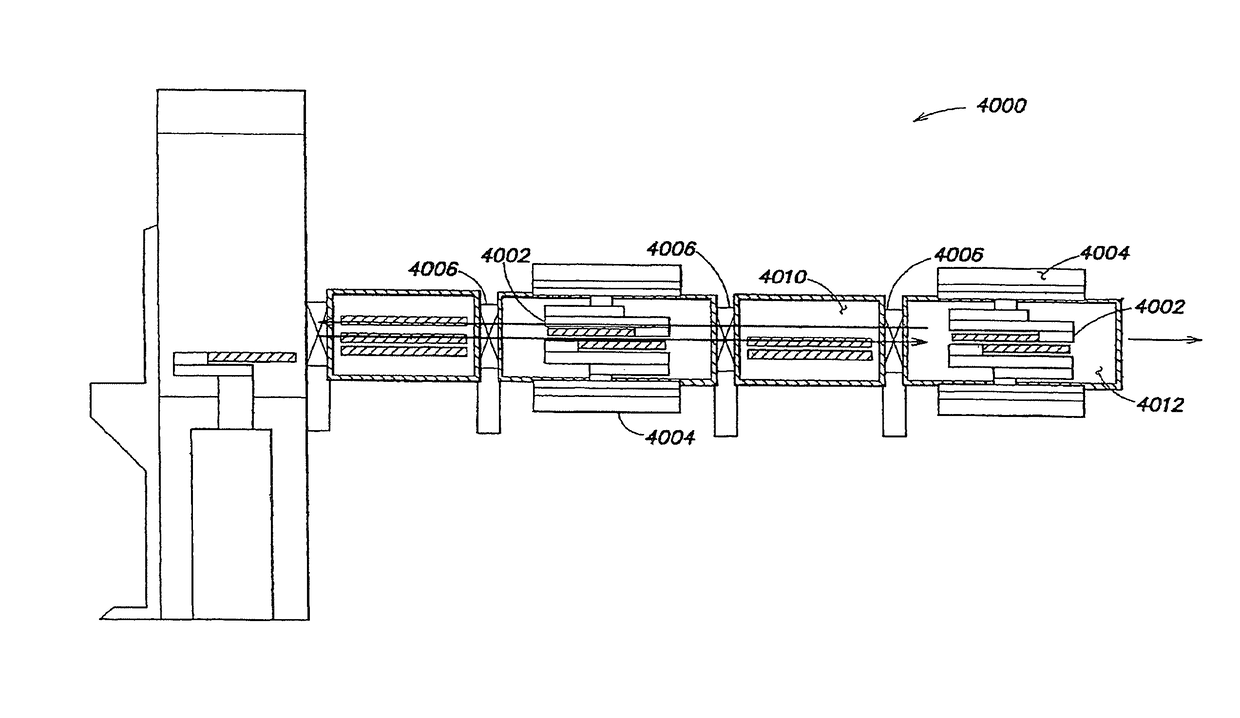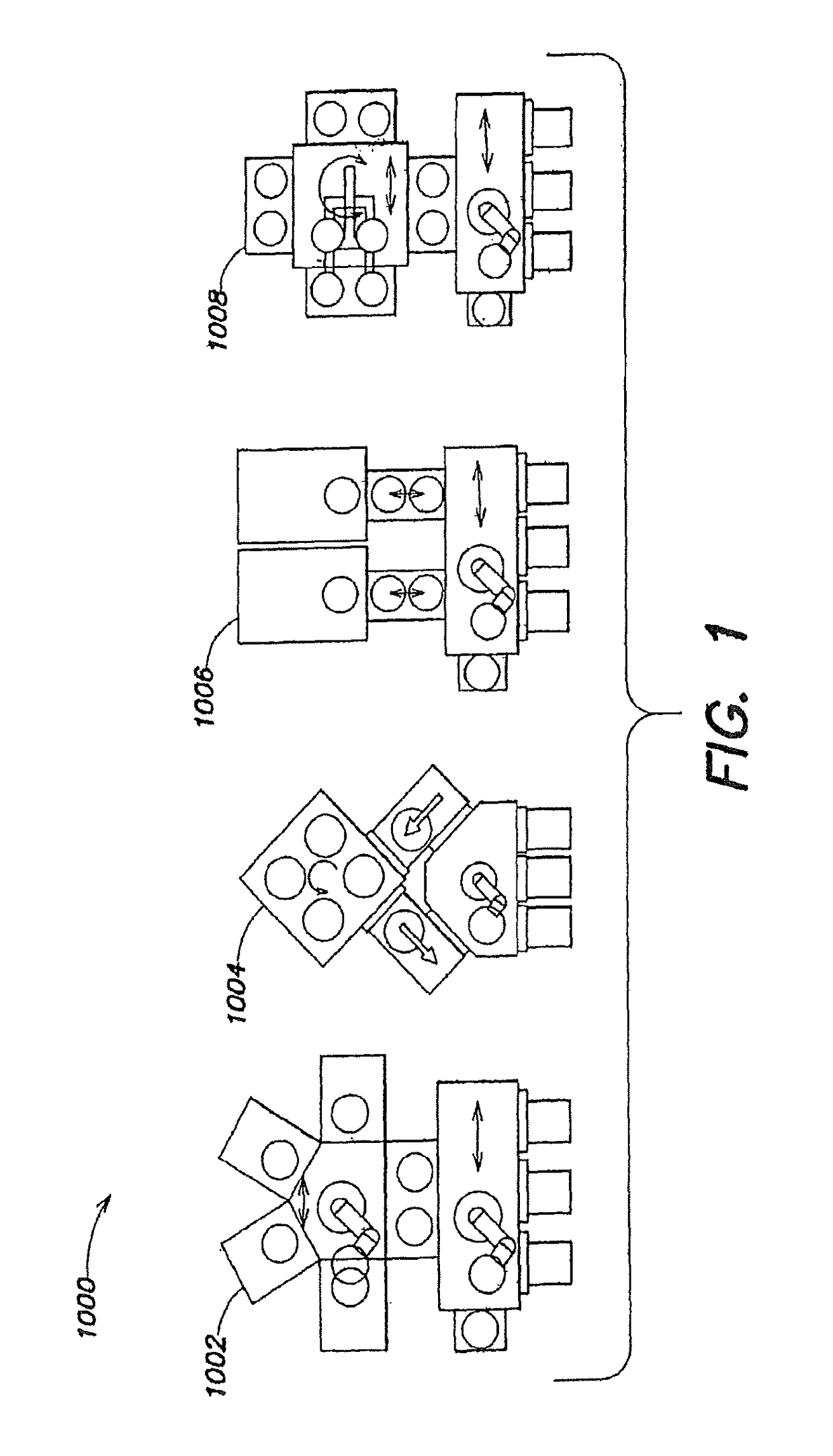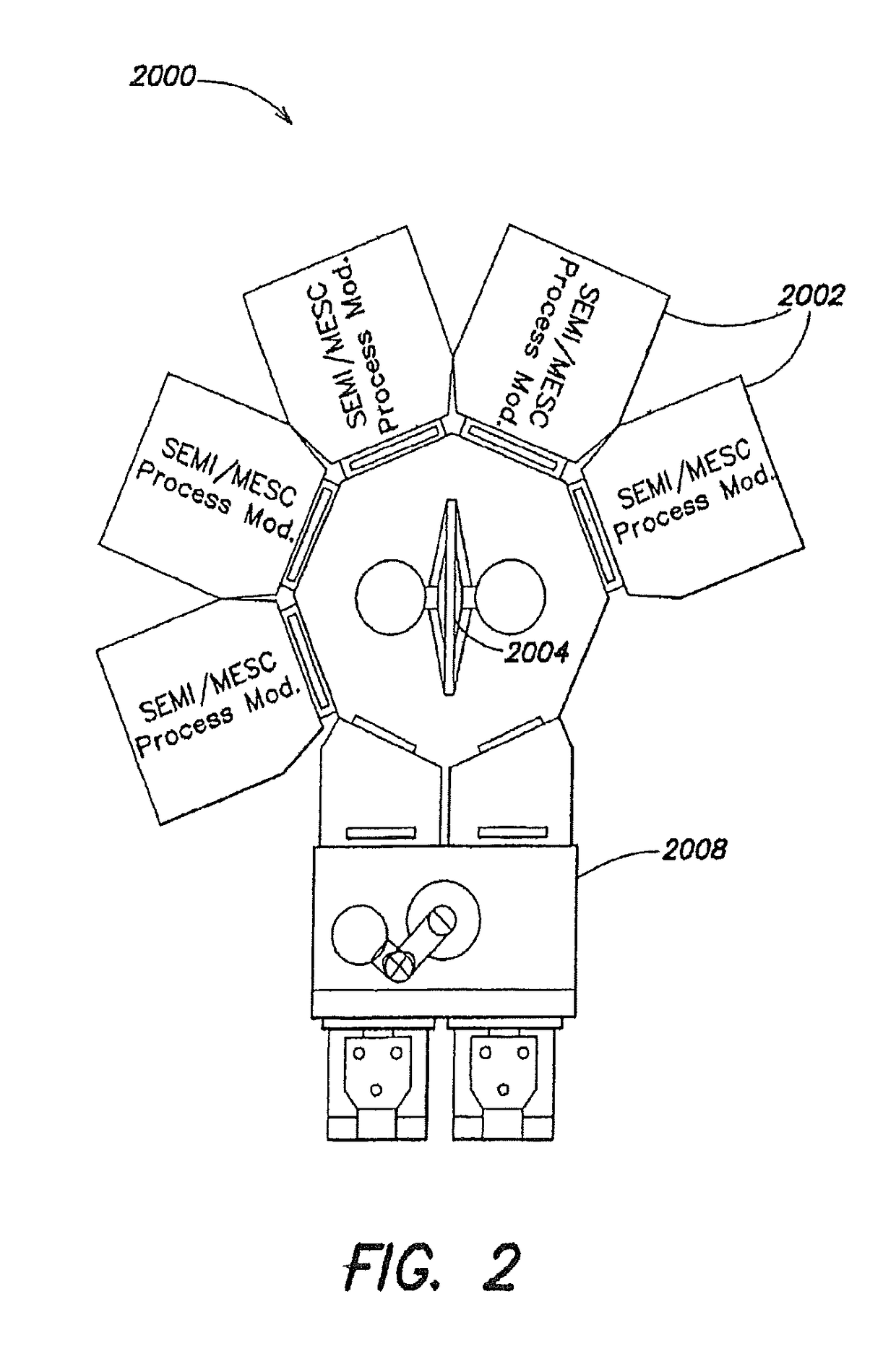Semiconductor wafer handling and transport
a technology of semiconductor wafers and wafers, applied in the direction of conveyors, electrical equipment, conveyor parts, etc., can solve the problems of large space occupation, linear tools, cluster tools, and linear tools, and achieve the effect of convenient manufacturing methods, convenient vacuum sealing, and small footprin
- Summary
- Abstract
- Description
- Claims
- Application Information
AI Technical Summary
Benefits of technology
Problems solved by technology
Method used
Image
Examples
Embodiment Construction
[0154]FIG. 1 shows equipment architectures 1000 for a variety of manufacturing equipment types. Each type of manufacturing equipment handles items, such as semiconductor wafers, between various processes, such as chemical vapor deposition processes, etching processes, and the like. As semiconductor manufacturing processes are typically extremely sensitive to contaminants, such as particulates and volatile organic compounds, the processes typically take place in a vacuum environment, in one or more process modules that are devoted to specific processes. Semiconductor wafers are moved by a handling system among the various processes to produce the end product, such as a chip. Various configurations 1000 exist for handling systems. A prevalent system is a cluster tool 1002, where process modules are positioned radially around a central handling system, such as a robotic arm. In other embodiments, a handling system can rotate items horizontally, such as in the embodiment 1004. An import...
PUM
 Login to View More
Login to View More Abstract
Description
Claims
Application Information
 Login to View More
Login to View More - R&D
- Intellectual Property
- Life Sciences
- Materials
- Tech Scout
- Unparalleled Data Quality
- Higher Quality Content
- 60% Fewer Hallucinations
Browse by: Latest US Patents, China's latest patents, Technical Efficacy Thesaurus, Application Domain, Technology Topic, Popular Technical Reports.
© 2025 PatSnap. All rights reserved.Legal|Privacy policy|Modern Slavery Act Transparency Statement|Sitemap|About US| Contact US: help@patsnap.com



